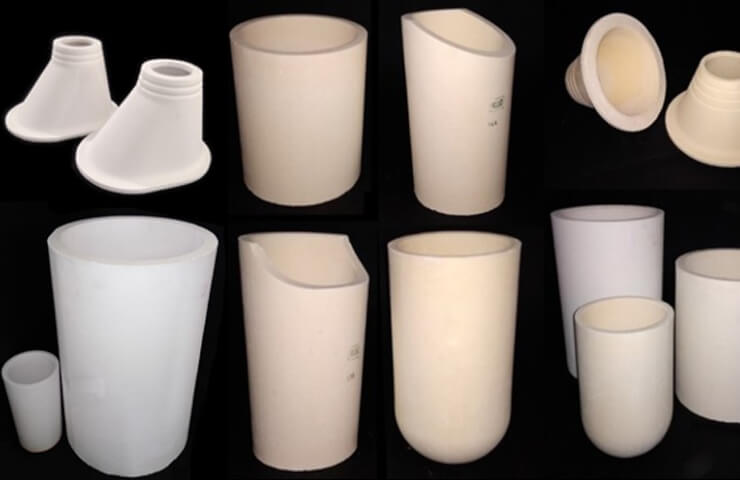Crucibles for melting are an integral part of many production processes, related to metallurgy, casting and other industries that require melting metal or other refractory materials. These small but important devices play a key role in converting raw materials into a finished product.
What are smelting crucibles?
Smelting crucibles are special containers or vessels, usually made from refractory materials. materials such as clay, graphite or silicon carbide. They serve to contain molten metal or other refractory substances during the smelting process. Crucibles can come in a variety of shapes and sizes, depending on the specific production requirements.
Crucibles are used in a variety of industrial processes such as metallurgy, casting, glass, ceramics and many other industries. They provide a safe and secure place for melting and storing molten materials, allowing control of temperature, composition and other process parameters.
Why are melting crucibles needed?
Melting crucibles play a number of key roles in industrial processes. Following are the main functions and benefits of their use:
Preservation of molten materials: Crucibles are designed to hold molten metals or other refractory substances. They provide a safe and secure place to store these materials and prevent them from being lost or spilled.
Temperature Control: Crucibles are well thermally insulated, allowing easy control the temperature inside the crucible. This is important for achieving the required temperature conditions during melting and other processes.
Separation of materials: In some cases, it is necessary to melt and process several materials simultaneously. Crucibles can be designed to separate materials and prevent mixing.
Reduce contamination: Crucibles are made from materials that have little interaction with molten substances, which helps reduce contamination of the material and ensures the purity and quality of the final product.
Easy to use and maintain: Crucibles are easy to clean and maintain, making them easy to use use. They also have a long service life if properly cared for.
Types of Melting Crucibles
There are several types of melting crucibles, each designed for specific applications . Below are the most common types of crucibles:
Graphite crucibles: Graphite crucibles are among the most common and versatile. They are characterized by high thermal stability and chemical inertness, which makes them suitable for melting many metals and other materials.
Clay crucibles: Clay crucibles, also known as kaolin crucibles, are often used in the ceramics industry. They have good heat capacity and can withstand high temperatures.
Silicon carbide crucibles: Silicon carbide crucibles have outstanding thermal stability and resistance to chemical aggressive environments . They are often used when working with aggressive metals and compounds.
Zirconium oxide crucibles: Zirconium oxide crucibles have high thermal stability and chemical inertness, which makes them suitable for melting a range of metals and compounds.
Aluminum crucibles: Aluminum crucibles are often used in laboratory and small scale production for melting aluminum and its alloys. They have low thermal inertia, which allows them to quickly reach high temperatures.
Factors for selecting and operating crucibles
When selecting and operating crucibles for melting, a number of factors should be taken into account important factors:
Type of material: The choice of crucible depends on the type of material that needs to be melted. Different materials may require different types of crucibles to ensure optimal results.
Temperature Conditions: Crucibles must be able to withstand the temperatures required to melt the particular material. For example, when melting metals, very high temperatures can occur, so the crucibles must be thermally stable.
Chemical resistance: If the material that will be melted is aggressive in relation to the crucible, it is important to select a crucible material that has chemical resistance to the material.
Size and shape: The size and shape of the crucible also matters , and these may vary depending on the melt volume and specific production requirements.
Thermal inertness: Thermal inertness of the crucible is important to prevent




